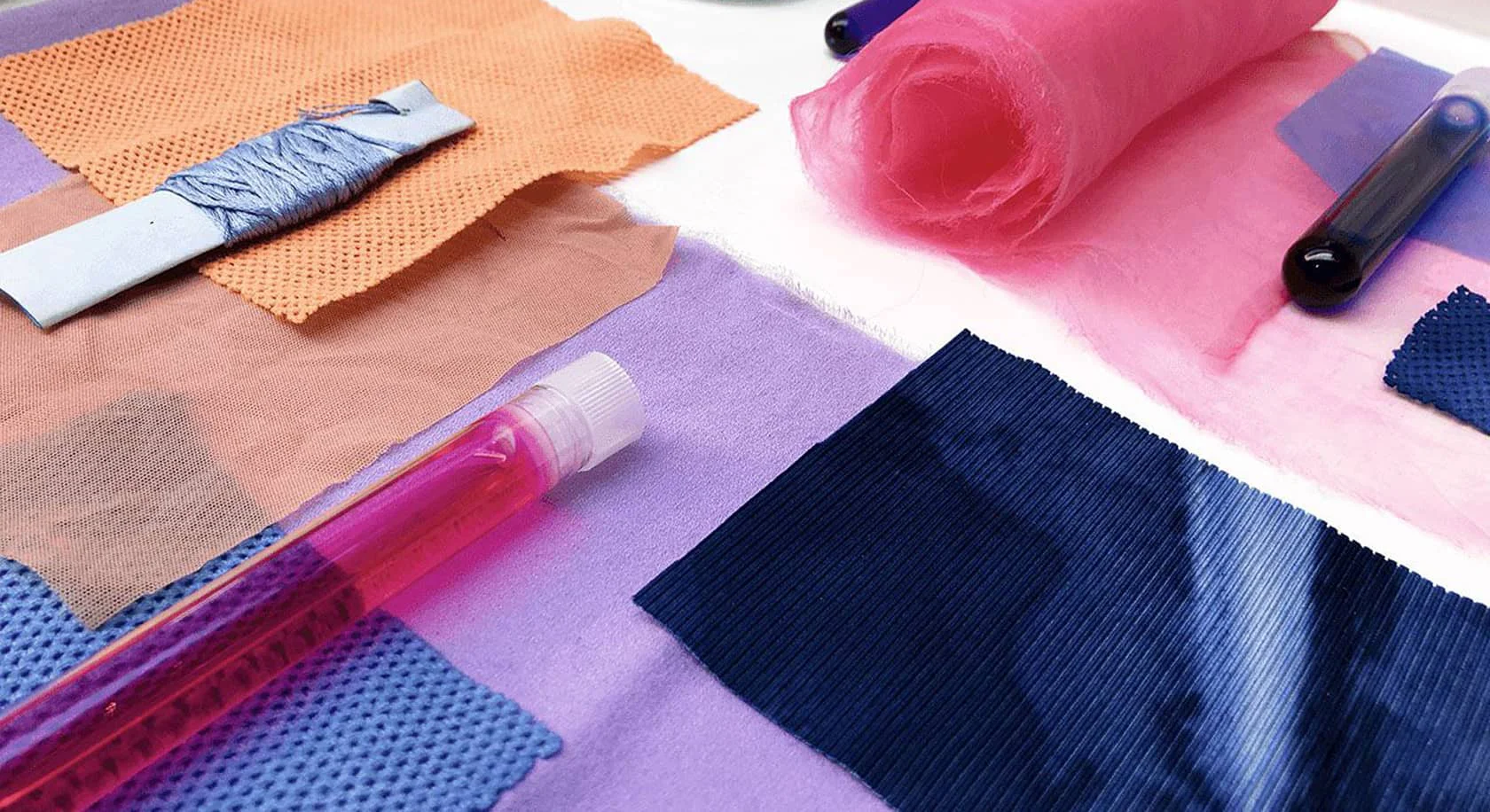Colour shapes the way we perceive the world. It evokes memory, emotion, and identity. But behind its vibrancy often hides a murky trail of pollution and synthetic processes. As the climate crisis deepens, our relationship with colour must change. Not only the way we wear it, print it, or see it, but the way we understand its origin. The future calls for colours that carry meaning, not toxins. Hues that honour the earth and celebrate the raw beauty of impermanence. What if colour lives, breathes, and grows with us?
What biogenic colour means
Biogenic colour is alive. It grows from nature itself: from bacteria, algae, fungi, plants. It is a way of working with living organisms as partners in the process of making. The colour emerges through fermentation, transformation, and time. In my practice, I’ve also explored colour through plants and sound-based methods, always seeking ways to let materials speak for themselves.
A living example: Living Colour
Living Colour is a biodesign research project I began in 2016, using pigment-producing bacteria to dye textiles. These pigments are not only biodegradable and safe for humans, but they tell a visual story of microbial life. It breathes with the textile, forming organic patterns that can’t be replicated. Every print becomes a unique encounter between biology and design, revealing traces of the bacteria’s lifecycle shaped by growth and movement. Collaborations with scientists, brands like PUMA, and exhibitions around the world have allowed this work to move from the petri dish into public space, garments, and automotive coatings.
Another step: BInc – Biogenic Ink
In 2022 I launched BInc, short for Biogenic Ink. Developed in collaboration with Vienna Textile Lab and Studio Ilfa Siebenhaar, this textile ink is made with bacterial pigment and designed for screen printing. The project investigates how microbial colour can be applied to graphic surfaces without toxic chemicals, using binders that are safer for people and the planet. BInc was first shown during Techtextil in Frankfurt and has since been presented at several international events and panels on sustainable innovation and its patent is currently pending.
What it asks from design and industry
Working with living organisms invites us to rethink what consistency and perfection mean. This shift asks for a new aesthetic language, a different production rhythm, and an openness to nature’s erratic beauty. This shift requires a mindset already explored by independent studios and researchers, collaborating with life itself, embracing fragility and transformation as core values.
The future of colour is expressive, grounded, and alive.




No comments
Post a Comment